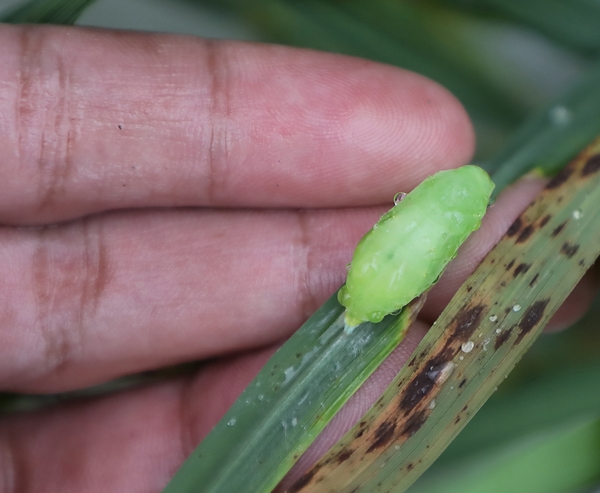
A farmer shows a juvenile green leaf hopper that had been infecting rice plants in Barangay Lunas, Asturias, Cebu with the tungro disease. CDN PHOTO/TONEE DESPOJO
AT LEAST 17 hectares of rice fields in Negros Oriental have been infested with black bugs, said Wilberto Castillo, chief of the Integrated Laboratory Services of the Department of Agriculture in Central Visayas (DA-7).
Quoting the outcome of their June 6 validation, Castillo said, the black bugs have been affecting rice fields in the the municipalities of Ayungon and Sta. Catalina.
“More than three hectares of rice farms in Barangay Tambo, Ayungon have been heavily infested with rice black bugs while 14 hectares were affected in Poblacion, Sta. Catalina,” he said.
Castillo said they are also validating reports of army worms and locust infestation affecting rice farms in Mabinay town in Negros Oriental and Bogo City and Medellin, San Remigio and Daanbantayan towns in Cebu province.
“Especially during the months of June to September, these pests would really come out and attack and damage corn farms during rainy season,” Castillo added.
He said the black bug infestation affecting Negros Oriental towns was reported after rice tungro disease also affected rice farms in Asturias town in the midwestern part of Cebu.
He said they are now distributing pesticides among Negros Oriental farmers to manage their black bugs infestation concerns.
“We are also conducting light trapping because rice black bugs are attracted to light. Once they are trapped, these bugs are killed through burning,” he said.
DA-7 is sending personnel to Negros Oriental next week to assess the extent of damage that black bugs have caused on rice plants in the province, he added.
The black bugs infestation, Castillo said, resulted from the use of the asynchronous planting method wherein farmers would just plant any crop that they want beside each other.
He said black bugs are that are often found on palay plants also affected their other crops.
Castillo said the pest would eat the palay’s base causing the crop to dry and eventually die.
Disclaimer: The comments uploaded on this site do not necessarily represent or reflect the views of management and owner of Cebudailynews. We reserve the right to exclude comments that we deem to be inconsistent with our editorial standards.
